Fermented foods are getting a lot of hype lately, especially given the last scientific discoveries that connect the quality of the microbiome with the brain health, via the microbiome-gut-brain connection. Sauerkraut (translated “sour cabbage” from German) is one of the easiest fermented foods that you can make in your kitchen without special tools or starters. We’ll show you how!
Sauerkraut is a naturally pickled cabbage using the process of lactic acid fermentation, similar to kimchi. Sauerkraut keeps in the refrigerator for a few months, and provides detoxifying and immune boosting nutrients throughout the winter, while also replenishing the microbiome with good bacteria.
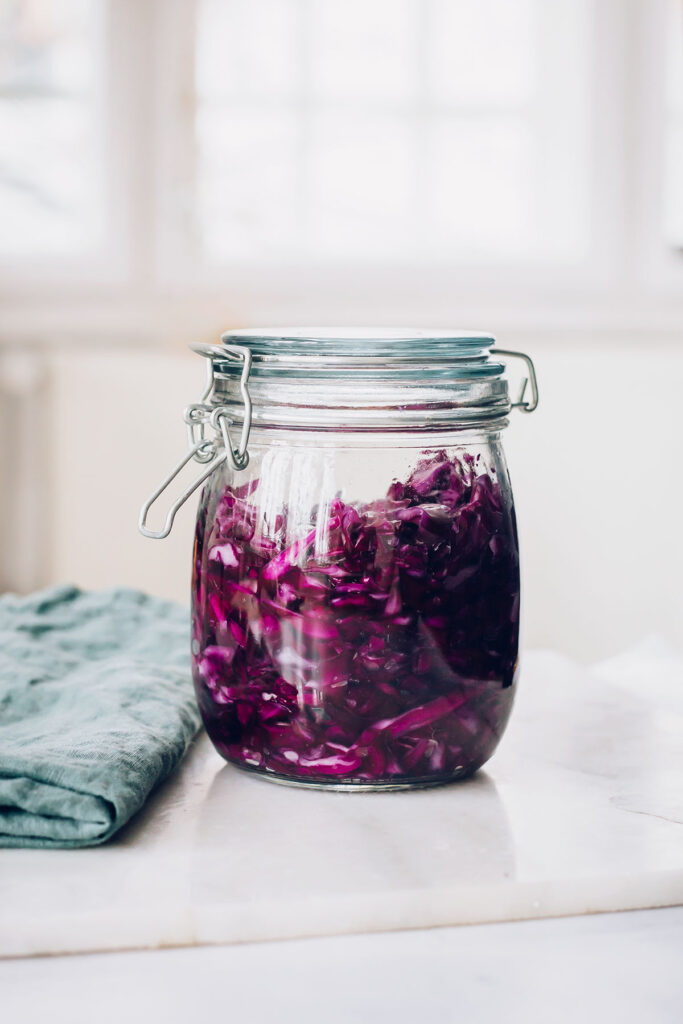
How to make red cabbage sauerkraut
Fermenting cabbage is a very easy process that only needs to follow specific hygiene rules to obtain a cultured vegetable with multiple health benefits. Here are the specific steps for making red cabbage sauerkraut:
- Pick your ingredients – choose a very fresh red cabbage from the farmers’ market and unprocessed salt (Celtic or Himalayan salts work best). The salt will extend the shelf life of your sauerkraut.
2. Choose an airtight jar and clean it well, rinse and pat dry it.
3. Thinly slice the cabbage and transfer into a large bowl.
4. Add the salt.
5. Use your hands to massage the cabbage until it reduces the volume and release its juices that will form the brine. Set aside for 20 minutes to allow the cabbage to release as much juice as possible.
6. Transfer the massaged cabbage and its juices into the jar and press it well with your fingers, to submerge it in brine. This will provide an anaerobic environment that will help the fermentation.
7. Add a small bowl on top to keep the cabbage submerged in the brine, then lid the jar.
8. Keep the jar in your countertop, away from the direct sunlight, for about 2 weeks.
9. Store in the refrigerator.

How long does it take to make sauerkraut?
While for small batches it only takes a few days to start getting that lovely sour taste, we recommend fermenting your vegetables for at least two weeks up to one month to get a good bacteria-rich sauerkraut.
How much salt do you need to make sauerkraut
Adding salt to your fermented vegetables creates a conducive environment for the proliferation of lactobacillus, a good bacteria responsible for making your sauerkraut sour and packed with health benefits. Salt also prevents the proliferation of microbes and mold, while also preserving the life shelf of your sauerkraut.
We try to keep the salt to lowest quantities possible, so we normally go with 2 tsp for a medium cabbage head. 1 tablespoon salt per 2 pounds of fresh cabbage it’s the perfect ratio.
How do you know when sauerkraut is done
Depending on the quantity, you can check the taste and aroma of your sauerkraut after a few days or after two weeks. If the taste is sour and it has a pleasant aroma, similar but less pungent than the one of vinegar, the fermentation is complete and you can move the jar in the refrigerator to slow down the fermentation process and start consuming the sauerkraut. If mold appears on top, or if the smell isn’t pleasant, it means that something went wrong and you should start the process again with another fresh cabbage batch.
How To Make Sauerkraut
Ingredients
- 1 large red cabbage head about 2 pounds
- 1 tbsp unprocessed salt Celtic or Himalayan salt work best
Instructions
- Thinly cut the cabbage using a very sharp knife.
- Transfer into a large bowl.
- Add the salt, then use your hands to massage the cabbage until it release its juices.
- Set aside for 20 minutes, to allow the cabbage to release most of its juices, which act like a brine.
- Transfer the cabbage and the juices into a very clean airtight jar, press well to submerge the cabbage into brine.
- Top with a small bowl to keep the cabbage under brine and create an anaerobic environment.
- Lid the jar and keep on the countertop away from direct the sun light for at least 2 weeks.
- Open the jar and check the cabbage - if it tastes and smells pleasantly sour, you can transfer in the refrigerator and start consuming it. If the smell is unpleasant, or molds have developed inside the jar, it means that something went wrong and you need to start the process with a new cabbage batch.
- Store in the refrigerator for up to 6 months.
22
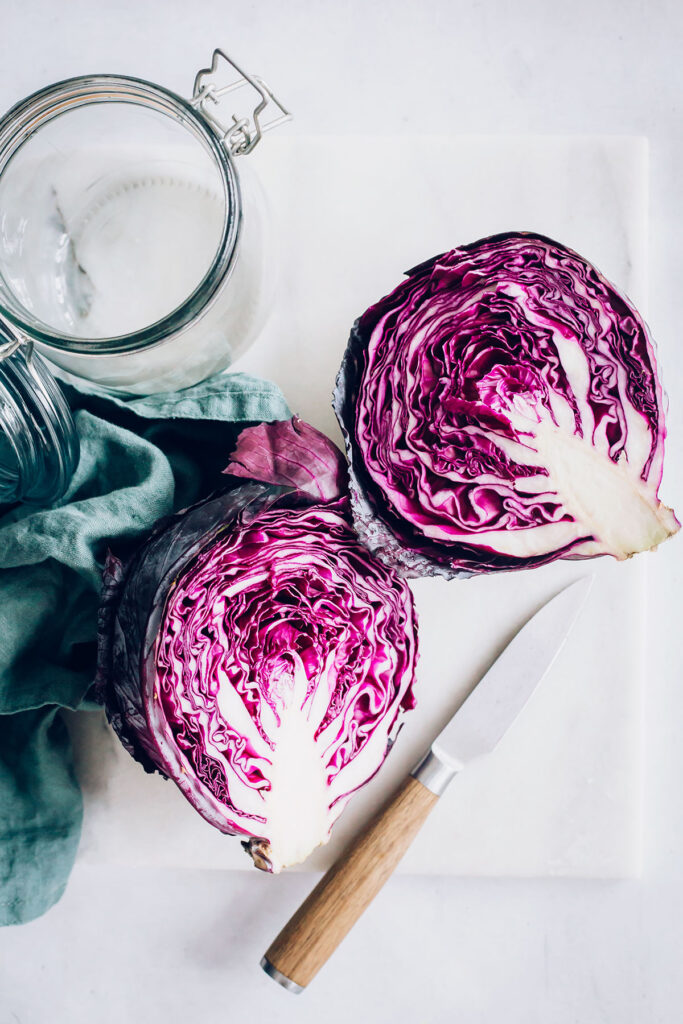
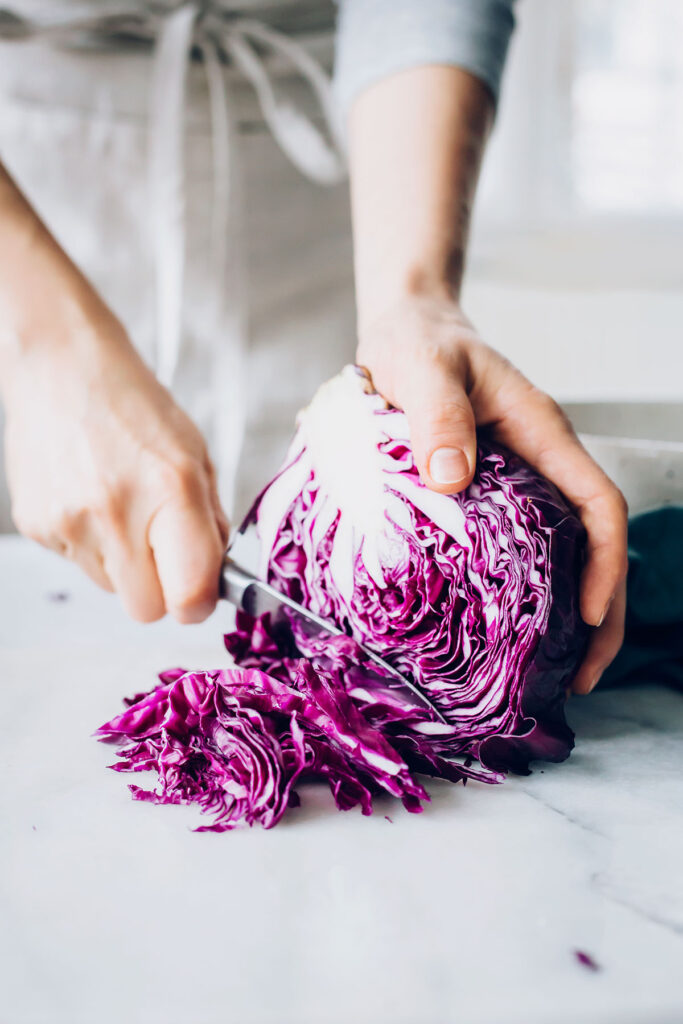
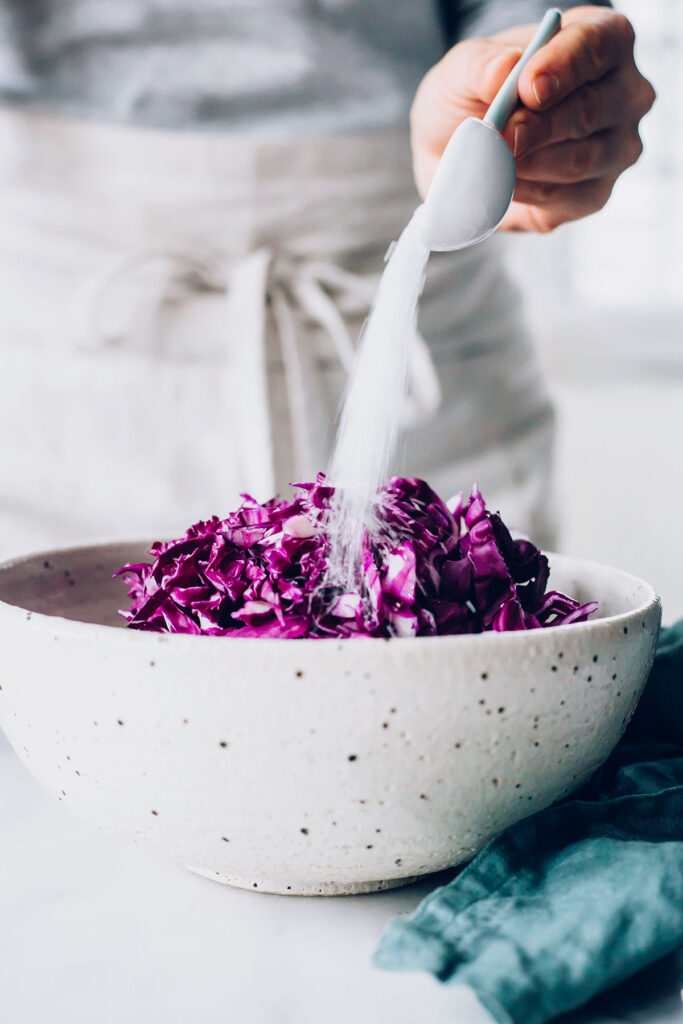
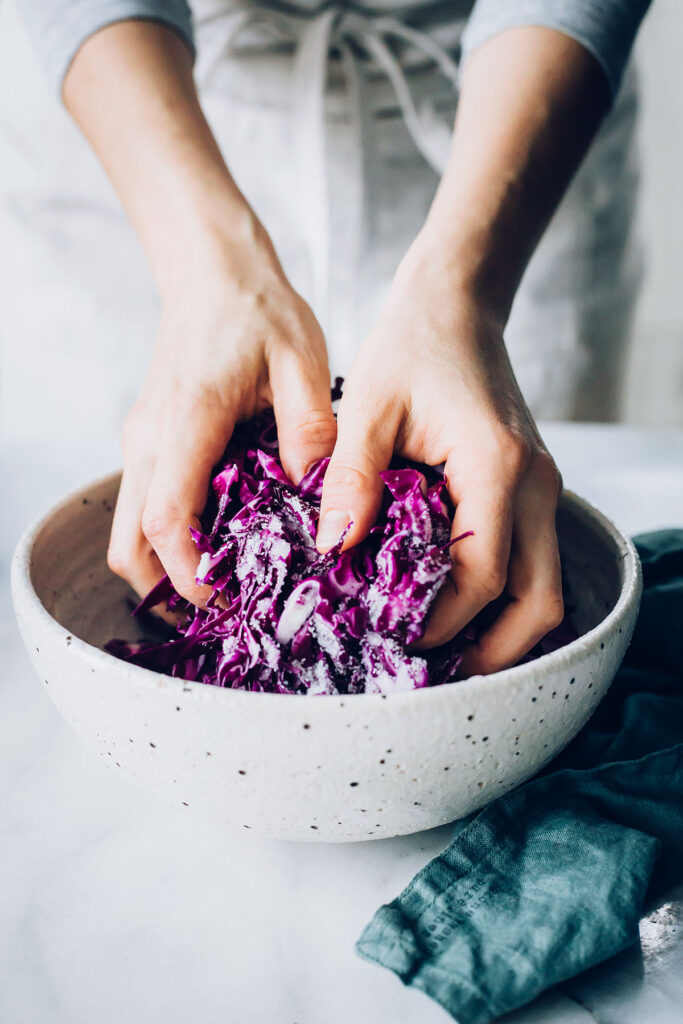
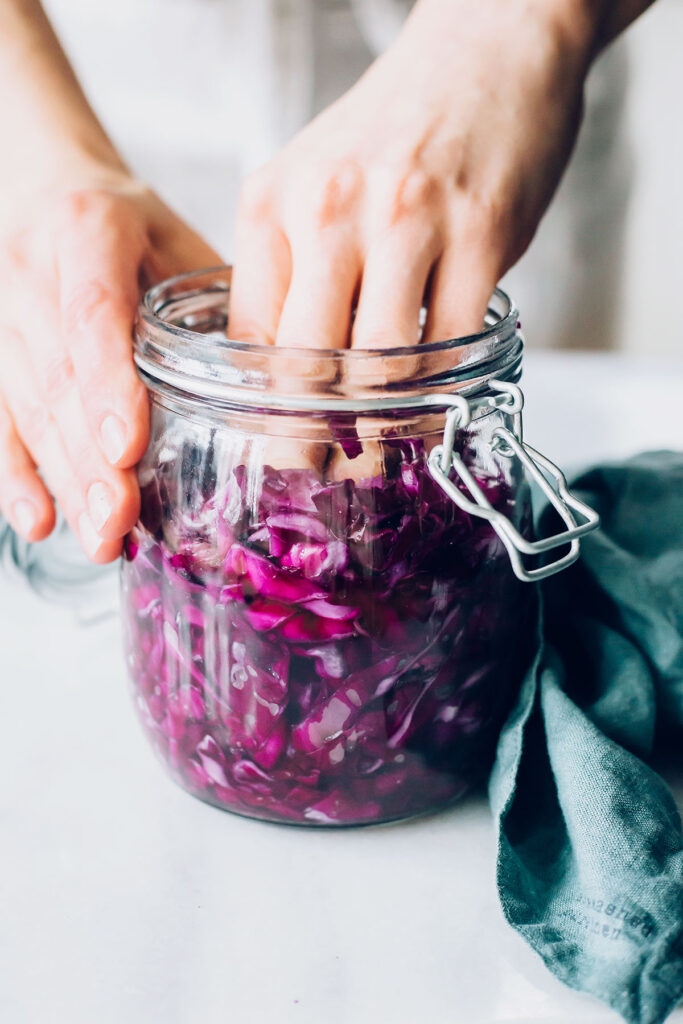

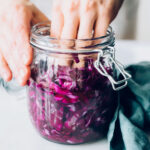
Leave a Reply